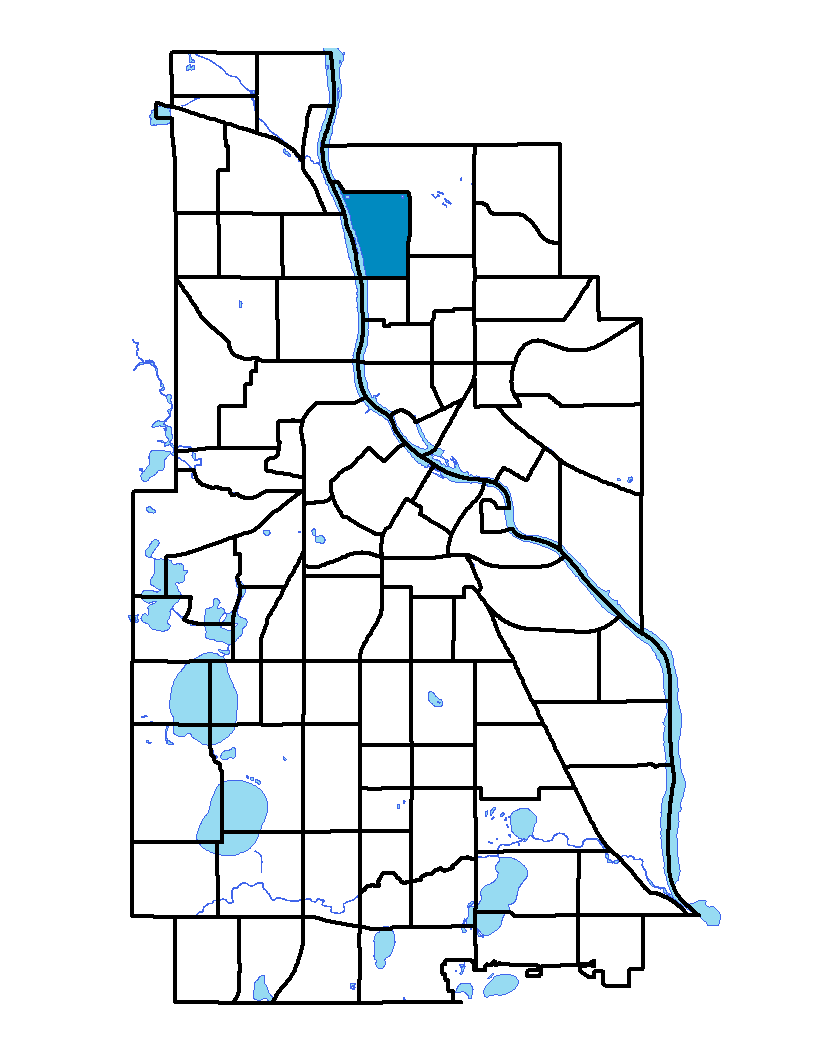Marshall Terrace neighborhood is located in Minneapolis' Northeast community. The borders of the neighborhood are Saint Anthony Parkway on the north and Lowry Avenue on the south. The Mississippi River is the western extent, and 4th Street NE and University Avenue are the eastern extent. The neighborhood is named after Minnesota's fifth governor, William R. Marshall, who served from 1866 to 1870. Large tracts of land in this neighborhood are used for industry, railroad tracks and utilities. About 20 percent of the land is residential with related commercial uses. Residential uses are restricted to the center of the neighborhood with utilities mainly along the river and industry and railroad tracks to the east.
To learn more about the neighborhood association visit: www.marshallterrace.org
Indicator Details
|
Indicators |
Primary Domain | Indicator Value | Rank | Tier |
|---|---|---|---|---|
| Access to Mainstream Financial Services | Economic Health | 25.9% | 47 | Middle |
| Access to Parks and Open Space | Natural Areas | 3.0% | 62 | Bottom |
| Adult Educational Attainment | Educational Opportunities | 93.0% | 32 | Middle |
| Age of Housing | Housing | 85.6% | 39 | Middle |
| Blood Lead Levels in Children | Housing | 1.3% | 11 | Top |
| Business Retention | Economic Health | 2.6% | 35 | Middle |
| Chronic School Absence | Health Systems and Public Safety | -% | - | Data N/A |
| Commute Mode Share | Transportation | 21.6% | 63 | Bottom |
| Employment Rate | Employment Opportunities | 62.5% | 63 | Bottom |
| Excessive Housing Cost Burden | Housing | 35.7% | 61 | Bottom |
| Food Desert | Neighborhood Characteristics | 100.0% | 31 | Middle |
| High School Graduation Rate | Educational Opportunities | -% | - | Data N/A |
| Household Transportation Costs | Transportation | 17.3% | 46 | Middle |
| Local Business Vitality | Economic Health | 59.8% | 22 | Top |
| Long-Term Unemployment | Employment Opportunities | 6.9% | 58 | Middle |
| Low Birth Weight | Health Systems and Public Safety | 6.5% | 34 | Middle |
| Motor Vehicle Collisions | Health Systems and Public Safety | 4.5 | 34 | Middle |
| Offsite Alcohol Outlets | Neighborhood Characteristics | 2 | 61 | Bottom |
| Pedestrian Connectivity | Transportation | 55.8 | 84 | Bottom |
| Preschool Enrollment | Educational Opportunities | 26.2% | 71 | Bottom |
| Preventable Hospitalizations | Health Systems and Public Safety | 1.3 | 8 | Top |
| Proximity to Brownfield Sites | Environmental Hazards | 15.0% | 65 | Bottom |
| Proximity to Superfund Sites | Environmental Hazards | 57.5% | 67 | Bottom |
| Public Assisted Households | Employment Opportunities | 25.0% | 50 | Middle |
| Reading Proficiency | Educational Opportunities | -% | - | Data N/A |
| Residential Mobility | Social Cohesion | 83.2% | 29 | Top |
| Residential Proximity to Traffic | Environmental Hazards | 0.0% | 1 | Top |
| School Proximity to Traffic | Environmental Hazards | -% | - | Data N/A |
| School Readiness Scores | Educational Opportunities | -% | - | Data N/A |
| Toxic Releases from Facilities | Environmental Hazards | 92.5% | 80 | Bottom |
| Transit Accessibility | Transportation | 245.7 | 59 | Bottom |
| Travel Time to Work | Employment Opportunities | 24.8 minutes | 79 | Bottom |
| Tree Cover | Natural Areas | 25.7% | 72 | Bottom |
| Vacancy Rates | Housing | 3.8% | 8 | Top |
| Violent Crime | Health Systems and Public Safety | 47.1 | 44 | Middle |
| Voter Participation | Social Cohesion | 22.6% | 53 | Middle |
| Walkability | Neighborhood Characteristics | 36 | 79 | Bottom |

